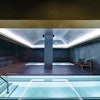Copyright 2017 The Columbus Dispatch
All Rights Reserved
The Columbus Dispatch (Ohio)
Reynoldsburg officials say they aren't pursuing a community center with hopes of it turning a profit.
Few do.
In fact, last year's most successful city-owned center in a Franklin County suburb, in Westerville, recouped just 77 percent of its operating expenses, according to data provided by city officials.
That statistic is one of many reasons why Reynoldsburg asked the YMCA of Central Ohio to run its center in the event that voters approve an income-tax levy in May to build it.
The 162-year-old nonprofit group also boasts an impressive track record and valuable institutional knowledge, officials said.
"When an entity like the YMCA assumes the substantial overhead of running one of these facilities, that frees up taxpayer money to be used on other things, like hiring police and repairing streets," Reynoldsburg Mayor Brad McCloud said.
At a town-hall meeting last month, some Reynoldsburg residents questioned whether it would be advantageous for the city to operate its community center instead of passing the future responsibility to the YMCA. They raised concerns about the YMCA pocketing profits in a facility built by taxpayer funds.
It's expected the YMCA would pay for the facility's staffing, programming and maintenance, assisted by a board of local advisers. The arrangement isn't official yet, but should be by the end of March.
The plan isn't unprecedented in central Ohio.
Three of the YMCA's 13 central Ohio buildings are government-owned -- in Delaware, Liberty Township and Urbancrest -- and two others -- in Gahanna and Grove City -- operate on city-owned land, said Brian Kridler, vice president for strategy and innovation for the YMCA of Central Ohio.
Among the benefits: The YMCA offers an expansive portfolio of programming, efficient operating plans and tried-and-true fundraising strategies to offset deficits, he said.
"Running a membership organization might sound easy, but it's not," Kridler said. "Recreational facilities are very expensive to operate. In arrangements like this, we take on the risk."
For city-owned centers, expenses that aren't recovered through membership and program fees are subsidized with taxpayer dollars.
In 2016, Dublin's recreation center recovered just 46 percent of its $8.2 million operating budget; Groveport recouped 67 percent of its $2.5 million spent; and Westerville reclaimed 77 percent of its nearly $3 million in expenses.
Worthington officials couldn't provide a budget solely for the city's recreation center, but data they provided indicated that the city's entire Parks and Recreation Department recovered just 41 percent of its expenses last year.
The national average for a department's cost recovery is just 29 percent, according to the Virginia-based National Recreation and Park Association.
Many departments and centers instead measure success through intangible benefits: improving health and wellness, enticing new residents, increasing property values and enhancing a community's quality of life, said Kevin Roth, the association's vice president of research.
Increasing fees too much can deprive some residents of those services.
"It's not about profit; it's about providing a service to an entire community, but ultimately you do have to find a way to cover your costs," Roth said.
That's why in Reynoldsburg, building the community center is contingent on increasing the city's revenue, McCloud said.
Officials propose a 1 percent income-tax increase to voters on May 2. If they approve the city's first such hike in more than 30 years, the tax rate would rise to 2.5 percent from 1.5 percent.
Of the anticipated $6.5 million a year in new tax revenue, Reynoldsburg is expected to use $1.5 million to pay on a 30-year loan for the new building. The remaining $5 million would be used for other city improvements. Facility construction and site work would cost between $20 million and $25 million.
The two-story, 52,000-square-foot center would be built at the north end of Huber Park on the site of an old swim center at 7215 E. Main St.
Voters can register for the May primary until April 3.
For more information, go to facebook.com/reycommunitycenter or reyccymca.org.
@AlissaWidman
Read More of Today's AB Headlines
Subscribe to Our Daily E-Newsletter
Terms and Conditions Privacy Policy































